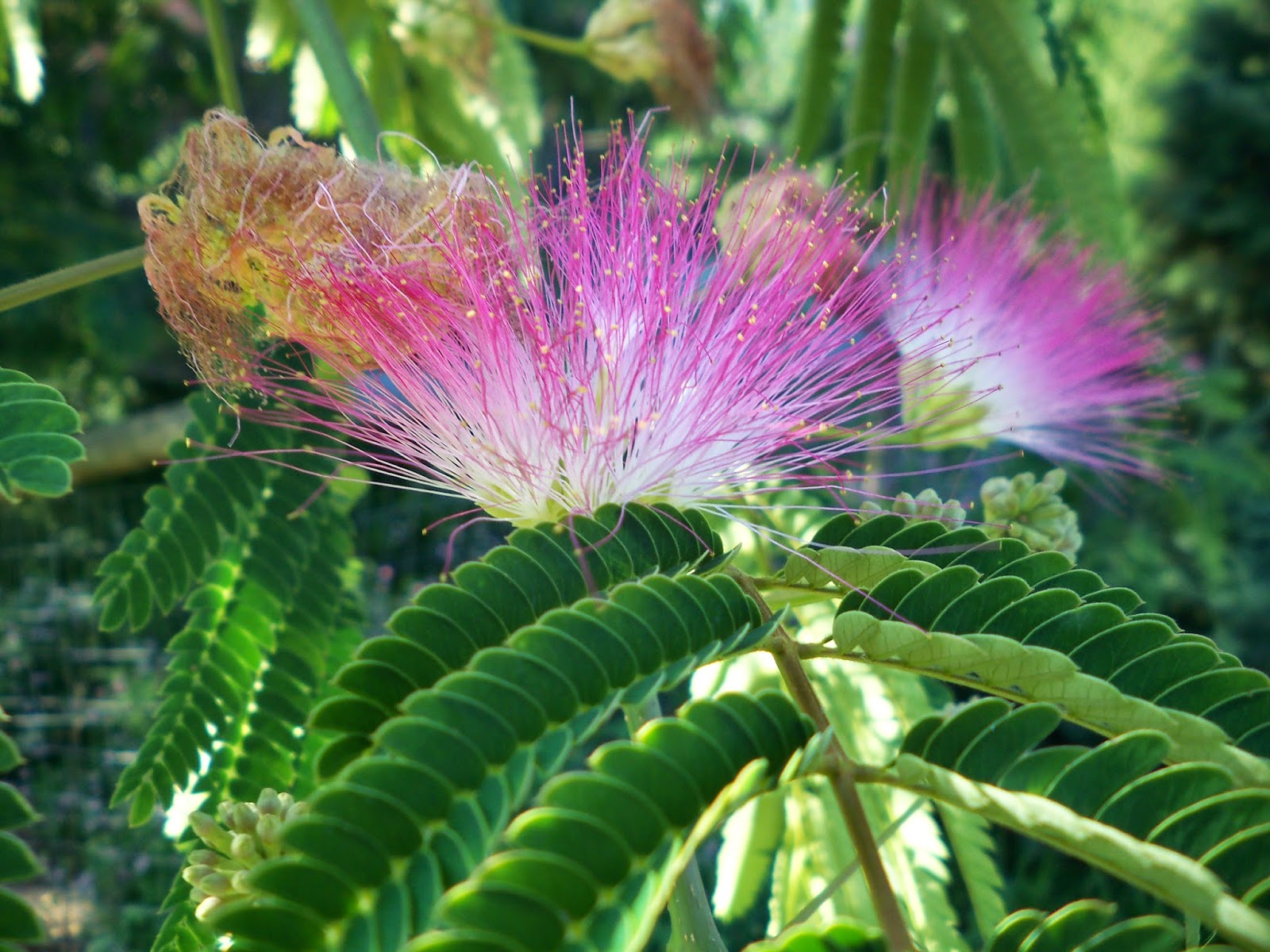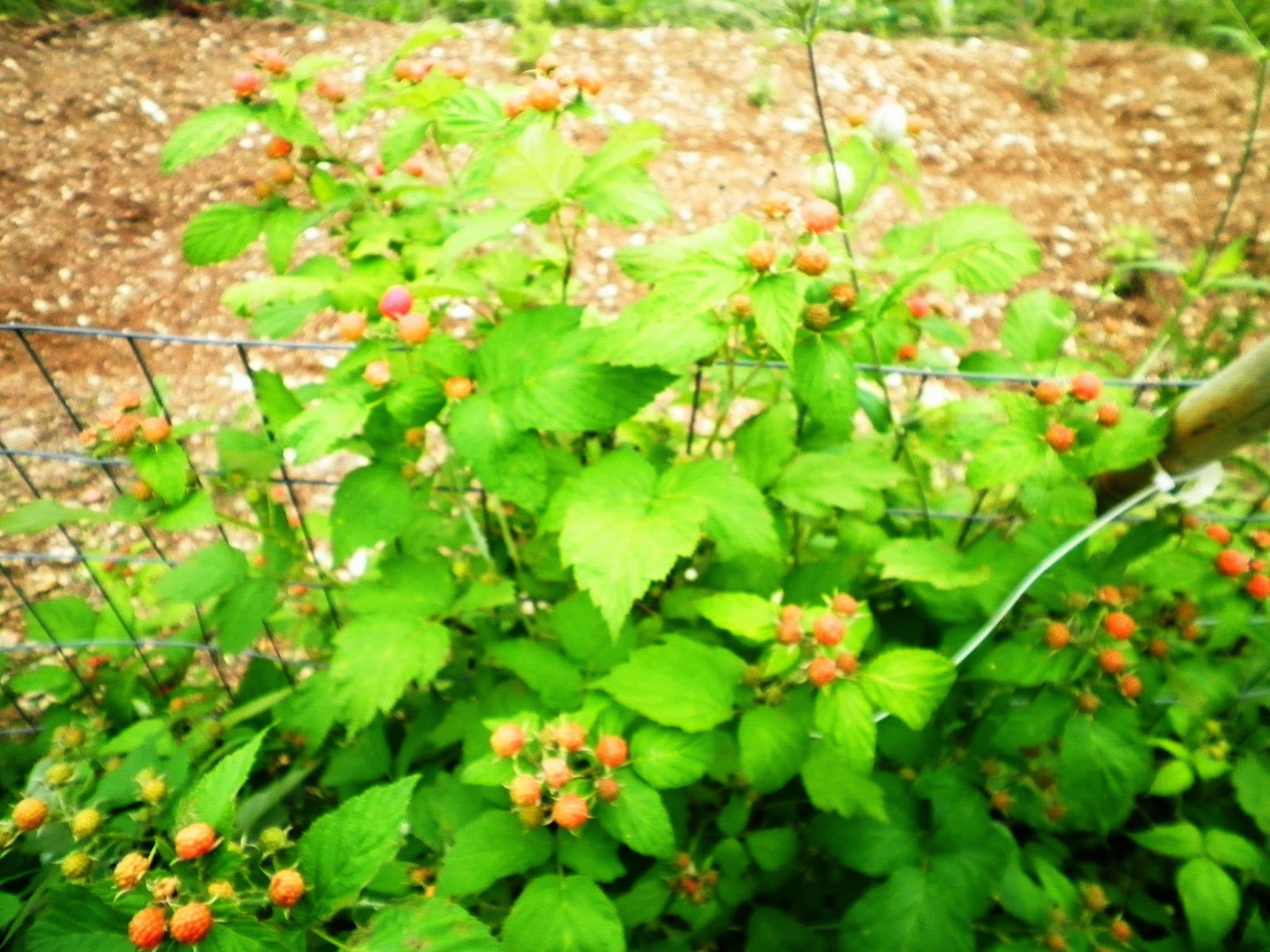By Tina Sams, The Essential Herbal Magazine www.essentialherbal.com
In my kitchen, you'll see a row of jars filled with various
fruits that have ripened during the past summer, just waiting for me to turn
them into cordials. In the recipes
below, you'll see that you don't need to steep the fruits for months on end,
but I do it this way and have a cordial making spree when time allows in the
late fall.
Making cordials is a great way to have a little taste of summer in the winter, a little sweetness after dinner, and they make a superb gift over the holidays. Besides the fruits, you can add different herbs and spices. Ginger is one of my favorites to add, as well as vanilla.
Making cordials is a great way to have a little taste of summer in the winter, a little sweetness after dinner, and they make a superb gift over the holidays. Besides the fruits, you can add different herbs and spices. Ginger is one of my favorites to add, as well as vanilla.
There are three main steps to making cordials.
Steeping - in this step, the ingredients are steeped in the
alcohol (usually vodka or brandy, but you can try anything you like).
Sweetening - typically a sugar syrup is used, but maple
syrup is a great substitute. Honey can also
be used.
Aging - The flavors all improve tremendously with age. Generally 2 to 4 weeks is good. I like to leave mine a lot longer, if possible.
More than anything (here comes my mantra...) have fun with
them and try the things that you like.
You might come up with the world's most delicious cordial all on your
own.
Here are some recipes to get you going:
Pick enough berries to fill a clean glass jar in the size of
your choice at least a third, and up to a half, full. I use about two quarts of
berries for a gallon of cordial. If those lovely wild blackberries don't grow
in your neighborhood, you can substitute raspberries or blueberries. The little
wild blueberries will give your cordial a more intense flavor than the larger
cultivated ones, but either way blueberries are relatively tough-skinned and
you will need to macerate them - crush or grind coarsely - before adding the
other ingredients.
Fill the jar to the top with equal parts of maple syrup and
brandy. I usually use E&J brandy, but any decent variety of 80 proof brandy
will do fine. As for the maple syrup, I like the dark, late-season Grade B
syrup because it has the strongest maple taste and contains more minerals than
the three lighter Grade A syrups produced earlier in the sugaring season. You
can use whatever grade of maple syrup you prefer, but please make it real.
Don't use the artificial stuff!!
Put the cover on the jar and shake to mix. Label, date, and
leave the fruit to infuse for at least 10 days, and up to 6 weeks. Shake
occasionally when you think of it. Strain out the fruit (marvelous over ice
cream) and decant the cordial into glass jars or bottles. Keeps for years
without refrigeration - but I guarantee it won't last that long!
Peach Cordial
Cut unpeeled peaches in quarters, and add them to a wide-mouth glass jar. Pits optional. Fill the the jar with brandy, to cover the fruit. (I use E&J brandy, which has no preservatives,although as a child of the 60s it still galls me to buy Gallo...). Anyway, let it sit, shaking it up occasionally, until the peaches lose their color and start looking mushy. Then, depending on where you are in the season, you can either proceed to the sweetening stage or strain and pour the brandy over a new batch of fresh peaches (and pits) for a more intense peach flavor.
Cut unpeeled peaches in quarters, and add them to a wide-mouth glass jar. Pits optional. Fill the the jar with brandy, to cover the fruit. (I use E&J brandy, which has no preservatives,although as a child of the 60s it still galls me to buy Gallo...). Anyway, let it sit, shaking it up occasionally, until the peaches lose their color and start looking mushy. Then, depending on where you are in the season, you can either proceed to the sweetening stage or strain and pour the brandy over a new batch of fresh peaches (and pits) for a more intense peach flavor.
When you're ready to sweeten and bottle, strain out the
fruit and add the ginger syrup -- a quart per gallon, or more to taste. Start
with a basic simple syrup recipe -- 2 parts water to 1 part sugar (demerara is
my preference). Add sliced, unpeeled ginger to taste. I like it HOT, so I use
LOTS of fresh ginger -- at the very least a cup.
Simmer/boil for 15 minutes or so til it thickens up, let it
cool with the ginger in it, then strain and add to the peach brandy. Decant to
smaller bottles as needed.
Pear Cordial
Use the basic fruit/brandy/maple syrup cordial recipe with either peaches or pears (or any other fruit), using 1/2 fruit and the rest equal portions of brandy and maple syrup -- or more or less of either one depending on how sweet you like it. I always look out at yard sales for pretty little bottles to fill up with summer cordials for winter solstice gifts -- a little bit of midsummer in midwinter!
Use the basic fruit/brandy/maple syrup cordial recipe with either peaches or pears (or any other fruit), using 1/2 fruit and the rest equal portions of brandy and maple syrup -- or more or less of either one depending on how sweet you like it. I always look out at yard sales for pretty little bottles to fill up with summer cordials for winter solstice gifts -- a little bit of midsummer in midwinter!
2 C water
2 C sugar
1/2 C dry instant coffee (a dark roast is best)
1 fresh vanilla bean, chopped
1-1/2 C vodka
Slice open and scrape the vanilla bean into the water. The
more you scrape/chop the bean the more flavor you will release. Boil the water,
sugar and vanilla bean together for 10 minutes. Turn off heat and slowly add
the instant coffee and keep stirring.
Allow to cool and combine this sugar/coffee/vanilla syrup
with the vodka. It tastes yummy right away but improves and mellows as it ages.
If you want a cleaner product strain out the vanilla particles. If you want an
even smoother taste add 1 t glycerin to the finished blend. Yield: about 4
cups.
Tip: Drizzle over ice cream. Oh my goodness....
1 T good quality tea leaves, we like earl grey or darjeeling
1 ½ C vodka
½ C sugar syrup
Steep the leaves in the vodka for 24 hours only.
Strain, filter, and add sugar syrup. Ready in 24 hours!
It’s Berry Good,
Susanna Reppert
10 oz package of berries, strawberry, raspberry or any berry (fresh or frozen)
10 oz package of berries, strawberry, raspberry or any berry (fresh or frozen)
1 ½ C Vodka
¼ C sugar syrup
Steep berries and the juice in the vodka for one week.
Strain and filter.
Taste and add sugar syrup as needed.
Note: Many frozen berries are pre-sugared.
And some of my own personal favorites:
1 pint 80 proof brandy
1 pint Maple syrup
3-5 cinnamon sticks
a few slices of fresh ginger
2 cardamom pods
the zest of one lemon
Put elderberries in a quart jar & muddle well. Add cinnamon sticks. Then add equal parts brandy & maple syrup
until the jar is full. Cover
tightly. Macerate for 6 to 8 weeks,
shaking gently every few days. Strain
& bottle.
1/2 cup cacao nibs
1 vanilla bean
1 qt brandy
1 qt maple syrup
Muddle cherries in 1/2 gallon wide-mouth jar. Add cacao
chips, brandy & maple syrup. Stir
well. Put on the lid and wait. This needs to age for 6 weeks.
This beverage needs to be made up early in January for use
mid- February, but it will be worthwhile. The flowers give it a beautiful deep
pink color, and can be served with ginger ale and lime slices.
The following ingredients should be placed in a ½ gallon jar
with a tight fitting lid that allows for shaking. Be sure to label and date the
jar. Put out of sunlight while it sits for 1-6 weeks. Shake occasionally. All
herbs and flowers are dry.
1 fifth of good quality vodka
½ c red rose petals
½ c red rose petals
½ c hibiscus flowers
½ c rose hips
½ c rose hips
½ c spearmint
¼ c granulated orange peel
¼ c granulated orange peel
¼ c cinnamon bark chips
After sitting this mixture is ready to decant. Strain
through fine cheesecloth or muslin into a pitcher large enough to also hold the
additional 5 cups of Grand Marnier and simple syrup (below).
1 c Grand Marnier
4 c simple syrup made from 2 c water, 2 c sugar.
1 T either rose water or orange blossom water.
Add these ingredients to the vodka mixture and blend well.
Allow this to rest for a couple of weeks so that the flavors can become well
acquainted. Pour into beautiful bottles, cork, label, and enjoy.
1 fifth vodka
1 cup lavender buds
3 cups sugar
4 cups water
First infuse the lavender in the vodka for 24 hours. Strain.
If you leave the lavender longer, it gets too medicinal for my tastes.
Next, infuse the lemon zest in the vodka for one week, and
strain.
Make a simple syrup with the sugar and water, boiling gently
for 15 minutes without stirring. Cool
well, and add the infused vodka. Allow
this mixture to steep together for at least 2 weeks. Serve ice cold.
At this time of year, you can have some fun with the herbs and fruits available. I hope you got some ideas from these recipes!

















































